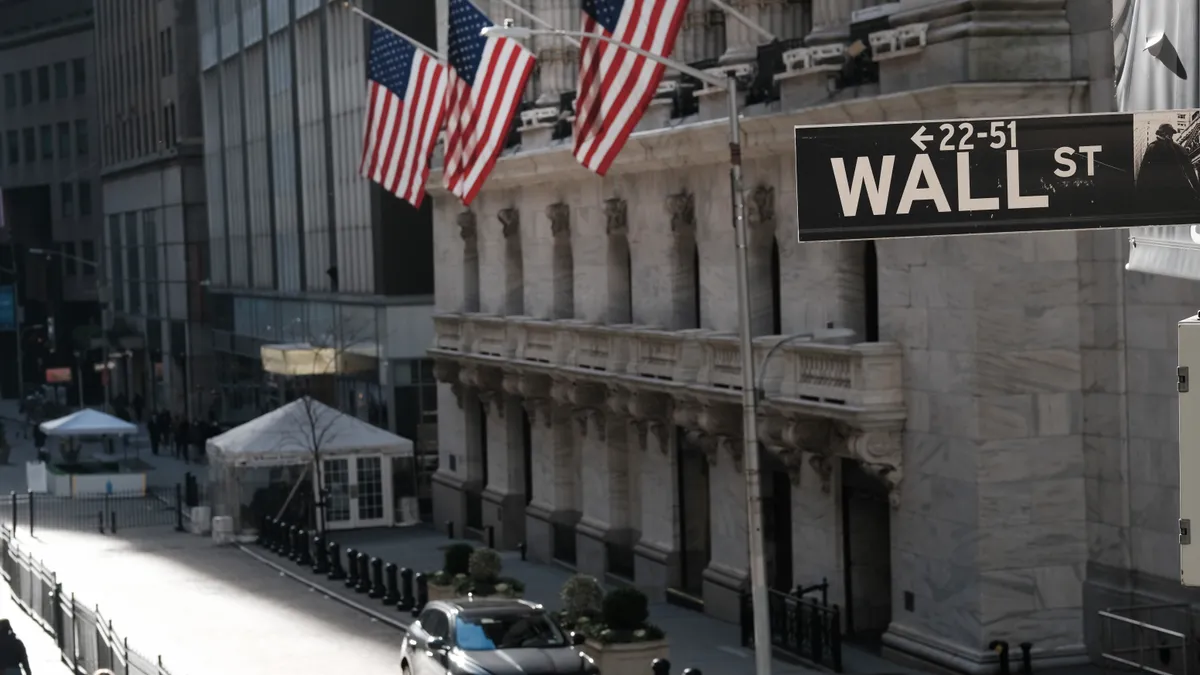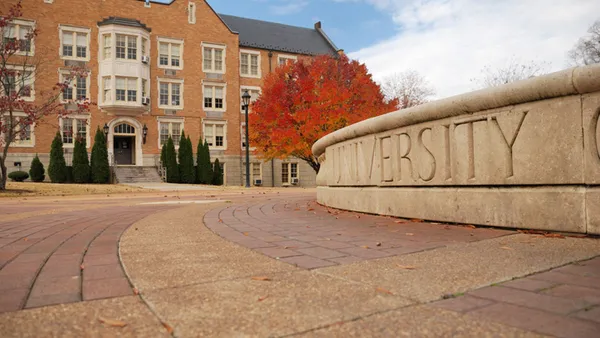Dive Brief:
- S&P Global Ratings revised its view of the U.S. not-for-profit higher education sector to stable, ending four years of negative outlooks even as it said it is monitoring divergence in fortunes between strong and weak institutions in the market.
- Factors boosting colleges' financial performance are federal relief funding, large investment gains in the 2021 fiscal year and rising auxiliary revenue in the fall, which comes after on-campus operations started recovering from large disruptions early in the pandemic. Strong state operating budgets are another plus for public universities, S&P wrote in a report on its 2022 outlook, which it released last week.
- Risks to colleges and their credit quality remain, including enrollment pressures, inflation, staffing issues, cybersecurity breaches and the possibility of events like governance scandals or social unrest.
Dive Insight:
The stable outlook from S&P applies to the higher ed sector's expected credit quality in 2022. It aligns with views published last month by competitors Moody's Investors Service and Fitch Ratings, which issued stable and neutral outlooks for the new year, respectively.
Ratings agencies typically review the debt of colleges that are better off than the average institution. But the agencies' work nonetheless gives them insight into market pressures and financial developments unfolding across higher ed, as well as into how past events are likely to affect the sector's future.
None of the colleges S&P rates defaulted on their debts during the pandemic. Most have greater financial strength heading into the new year than they had previously, according to the agency.
"For the first time in several years, the college and university sector is experiencing financial tailwinds," the report said.
Colleges learned to manage through the pandemic, and they enjoy more financial flexibility now than they did previously thanks to budget cuts and federal relief funding, according to S&P. But it expects many institutions' long-term credit stability to be closely tied to how they use the one-time federal dollars.
"For those facing enrollment declines or financial challenges, the stimulus may be a lifeline arriving just in time to avert major expenditure reductions," the report said. "Others could use stimulus money to accelerate projects."
Among top long-term challenges is a decline in the number of high school graduates, which is expected to arrive in the mid-2020s. Meanwhile, the pandemic heightened pressures that had already been mounting, like keeping tuition and fees at prices students can afford.
Typically, institutions seeing less demand before the pandemic have since experienced more operating pressures, the report said. Splits between credit quality at high-rated institutions and low-rated ones are widening. The ratings agency is watching credit quality bifurcate, or, in other words, move toward "winners and losers across the industry."
Institutions that have experienced strong demand are doing relatively well. Downgrades come more frequently for lower-rated, typically regional institutions.
"These schools often lack the size and scale, reputation or balance sheet to compete as effectively as higher-rated organizations," the report said. "Institutions with limited flexibility — whether that be due to declining enrollment, modest financial operations and resources, or management turnover — will continue to face weakened credit profiles in 2022 and beyond."
Higher ed has already seen a trend toward consolidation. It will continue, S&P predicted.
Some stressed institutions will be able to leverage high-value real estate, branding or strong programs into a merger or affiliation, according to the ratings agency. But with colleges competing for often-shrinking pools of students, S&P expects more closures — especially of small, regional, private liberal arts colleges.















